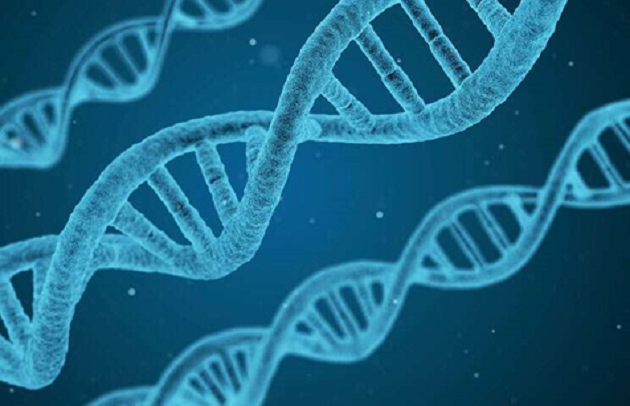Brace yourselves…
2021 is going to be a BIG year for some of today’s most exciting, new industries.
I’m not talking about industries like online shopping, cloud computing, 5G, and cybersecurity. It’s true that these sectors are booming... and may continue to hand out solid gains in the years ahead.
But they’re not new. People have been shopping online for over a decade. Companies first turned to cloud computing 15 years ago.
That’s why my colleague Stephen McBride and I say you need to be looking at the industries of tomorrow…
It’s the only way to truly get in on the “ground floor”… and set yourself up for potentially life-changing gains as they take off.
We call them hypergrowth industries.
And investors who get in today stand to make a fortune in the years ahead.
Stephen already shared one of our favorite new hypergrowth industries for 2021 in yesterday’s RiskHedge Report: private space travel.
Today, I’ll share 3 others we’re targeting right now. Our research shows 2021 could be the year they “break out.”
1. Synthetic Biology
Synthetic biology is a brand-new sector where breakthrough technology allows scientists to “program” living things.
I dedicated an entire RiskHedge Report to this exciting new industry last fall.
I’m sure you’ve seen the DNA double helix before.
 Source: edn.com
Source: edn.com
DNA is basically your body’s unique set of instructions. It’s what makes you, “you.” Your unique DNA makeup determines what you look like, how your body functions.
Think of DNA as the source code of every living thing on Earth. Synthetic biology gives us the tools to “edit” and create the DNA of an organism to get it to do something entirely new.
Basically, it allows scientists to alter the makeup of living things.
How does it work? In short, engineers design sequences of DNA on computers. Then they physically print out those sequences and insert them into living things. This can then add beneficial character traits to a living thing.
For example, scientists already use it to make “self-fertilizing” plants. Joyn Bio used fake DNA to modify the microbes of plants so they can pull nitrogen gas from the air and convert it into fertilizer.
Using synthetic biology, scientists have also created a reliable source of artemisinin which is used in malaria vaccines.
Fake meat pioneer Beyond Meat also harnessed this new technology to create more “realistic” veggie burgers.
It was first to use a DNA coding sequence from soybeans to create meat that looks and tastes like beef but is actually made from vegetables.
In short, this breakthrough tech allows scientists to reprogram the “operating system” of plants and other organisms.
Synthetic biology is hands down the most cutting-edge industry on earth right now.
As a way to play it, Stephen and I like Twist Bioscience (TWST) right now. You can read my RiskHedge Report on this stock here.
In short: Just as Intel’s microchips and IBM’s computers underpinned America’s computing revolution, Twist Bioscience’s DNA synthesis platform provides the building blocks for the biology revolution.
2. Genomics
DNA carries your genetic information. Think of it as a set of instructions for your body. Mapping your DNA allows scientists to decipher your body’s unique set of instructions.
By learning the secrets hidden within your DNA, doctors can tell what diseases you’re likely to get. This allows them to catch problems earlier and diagnose them more accurately.
In fact, the use of DNA mapping in healthcare is exploding right now. A new prenatal test based on DNA mapping can detect hard-to-find problems with babies inside their mothers’ wombs. It’s the fastest-growing medical test in American history.
Invitae (NVTA) is using these breakthroughs to turn America’s healthcare system on its head. In short, it’s building an alternate healthcare industry around DNA—or genetic—information.
By the end of 2020, Invitae will have mapped the DNA of almost one million Americans. And it’s creating a system where this information is used in our healthcare decisions.
For example, most cancers have a genetic link. In other words, mapping DNA can help detect the disease early. And when it comes to cancer, an accurate and timely diagnosis can literally save your life.
But right now, many cancers go largely undetected. Invitae is working to change this. I see genetic mapping ushering in the era of “personalized medicine” in America. If you haven’t heard about this yet, you will soon.
In short, DNA mapping will allow you, as an individual, to know which diseases you’re most at risk for. Knowing this, you’ll better understand the perfect foods, the perfect drugs, and the perfect exercise regimen, just for you.
But that’s only stage one. The genomics industry is evolving from “mapping” our DNA to editing it. Gene editing promises to transform how we treat and cure disease. Humans have between 20,000 and 25,000 genes that carry the DNA instructions for our bodies. But devastating diseases like cystic fibrosis and sickle cell anemia are caused by just one “error.”
Gene editing is making cures for certain diseases possible for the first time in history. It has the potential to cure thousands of diseases like cystic fibrosis, Huntington’s, sickle cell anemia, and hemophilia.
3. Artificial Intelligence/Machine Learning
The core idea of artificial intelligence (AI) is a machine that learns and thinks just like you or me. Most important, it learns all by itself, without human intervention.
But please understand, AI isn’t one single “all-knowing” machine like you see in the movies. Instead, it describes intelligent computers that do ultra-specific tasks.
For example, right now machines are learning to “see” for the first time ever. This is the basis of the flourishing computer vision industry.
Medical imaging disruptor Paige is using computer vision to revolutionize the way we diagnose cancer. Paige fed millions of real-life medical images into its computer program and taught it to detect early signs of tumors.
And it recently tested the system by scanning 12,000 medical images for potential tumors. It had never seen these images before, yet “achieved near-perfect accuracy.”
In other words, this computer has learned to recognize cancerous tumors better than human doctors. Paige is just one example of machines performing like superhuman doctors.
Stanford researchers recently built a computer that scans MRIs to detect Alzheimer’s disease with 94% accuracy. Other teams are teaching computers to drive. Amazon recently acquired top self-driving car startup Zoox for $1.2 billion. Zoox’s “computer on wheels” is so good at driving it can zip through San Francisco’s busy streets without a human driver.
Then you have firms developing checkout-free grocery stores, which turns your local Whole Foods into a giant supercomputer.
Last year, Amazon launched its “Dash Cart.” The shopping cart uses computer vision algorithms and sensors to identify the items in the cart. So you can simply grab items, throw them in the cart, and walk out.
In short, these are all world-changing technologies that will make many folks rich. Many new, unique disruptions are hiding underneath the misleading banner of “AI.”
Justin Spittler
Chief Trader, RiskHedge




